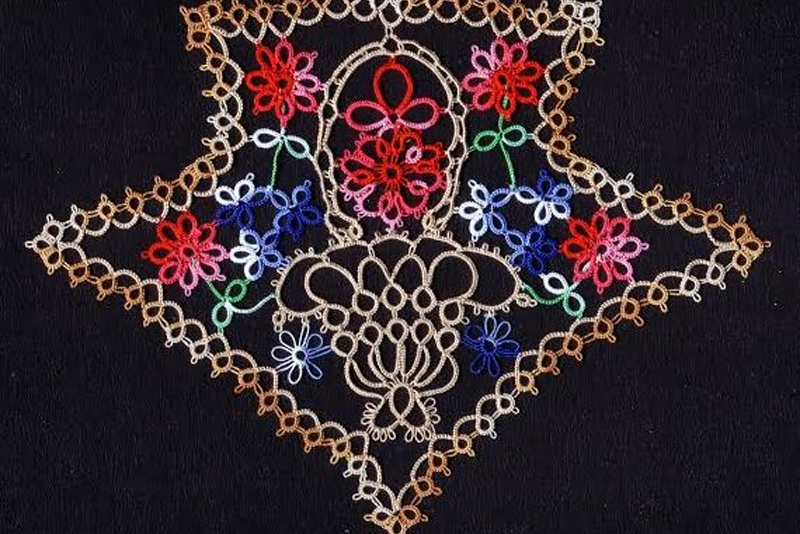The Weldon's Publishing Co. UK issued many magazines and booklets on needlework. Some of them had tatting patterns. No. 499 Vol. 42 featured tatting with filet lace. Included among the patterns were these three "funny-looking" edgings.
Without any fuss, the directions for the narrow edging had the tatter making Victorian sets or node stitch. After each set the directions were very specific about how the threads were manipulated.
"When turning it is most important to hold the cotton firmly, and also to ensure making a decided reverse of stitch so that the heading of previous stitches now points downward, to drop the shuttle at the back of the ball cotton, drawing it under and towards you to continue work. Fill the shuttle and tie the ends from the ball and the shuttle together. Do not put the cotton round the hand, but keep the cotton straight across the fingers, holding it very firmly."
Well, first let's countermand that idea about cutting the thread from the ball. If you are working in one color, you may work with one shuttle and the ball thread. Although you may want to fill extra shuttles, when ready to begin tatting, do NOT cut the thread from the ball. That simply creates another set of ends to hide.
The direction to not position the thread round the hand, just means to wrap the thread in position to tat a chain. Once begun the directions to reverse the work would have the tatter flipping the shuttle back and forth. Today we can modernize that method as well. The first segment would be tatted as normal, but instead of the reverse work, the tatter can simply wrap the double stitches from the next segment in the manner of wrapping a split ring, i.e., the flip or transfer does not happen. And, a half column's worth of written directions may be reduced to a simply formula. Enjoy!

A Narrow Edging
* CH 4 - 1 / 4 - 1, repeat from * for length desired.
Make the last picot on the last chain a mock picot and climb into the second row.
*CH 3 - 2 - 2 - 3 + (shuttle lock join to the next free picot on chain of row 1) repeat for length desired. Now the direction suggest placing a crocheted header (shudder!!) on the opposite side of row 1 but why not just chain across or use the picots to attach the lace directly to the cloth.

The Chadwell Insertion and Lace
Insertion:
CH 6 - 3 - 3 / 1 - 3 - 1 /
CH 3 - 3 - 6 / 6 - 3 - 1 /
CH 3 - 3 - 6 / 6 + (join to the second picot made)
*CH 3 - 3 / 1 - 3 - 1 /
CH 3 - 3 - 6 / 6 (join to picot made before the last join)
CH 3 - 3 / 1 - 3 - 1 /
CH 3 - 3 - 6 / 6 + (join to picot made before the last join)
Repeat from * for length desired.
For the larger insertion/edging use the last picot to climb out into the next row.
CH 4 - 4 + (shuttle lock join to the next available picot on that side) and repeat across.
If necessary for sewing purposes, the thread may be cut and reattached to the opposite side of the lace. If that is not a concern, chain down the width of the insertion and attach to the last free standing picot on the second side.
CH 5 + (shuttle lock join to the next available picot on that side)
CH 2 - 2 - 2 - 2 - 2 + (shuttle lock join to the next available picot on that side) and repeat.
Please visit tatting.bellaonline.com for even more great content about Tatting.
To participate in free, fun online discussions, this site has a community forum all about Tatting located here -
http://forums.bellaonline.com/ubbthreads.php?ubb=postlist&Board=39
I hope to hear from you sometime soon, either in the forum or in response to this email message. I thrive on your feedback!
Have fun passing this message along to family and friends, because we all love free knowledge!
Georgia Seitz, Tatting Editor
http://tatting.bellaonline.com
One of hundreds of sites at BellaOnline.com







